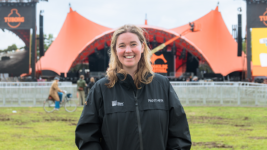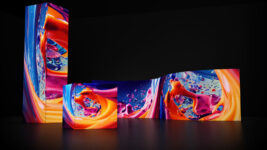News
13 Jun 2024
TOSCA
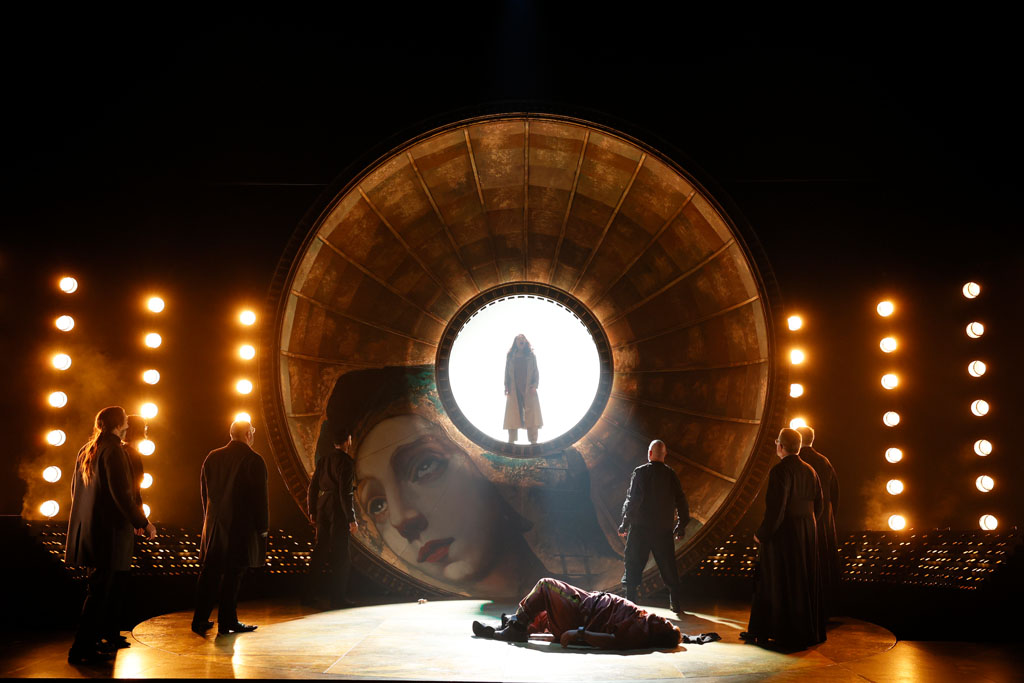
Subscribe to CX E-News
Opera Comes to Margaret Court Arena
Puccini is not a name you tend to hear in Margaret Court Arena, which most famously stars every summer as one of the main venues for the Australian Open. But in late May, it’s OA, not the AO, as Opera Australia turn the arena into a theatre to present Tosca, the perennial audience favourite; a tale of love, revolution, and betrayal set in one 24-hour period in Rome.
While the Australian Ballet have performed at Margaret Court, this is the first ever opera staged at the venue.
As OA’s usual Melbourne home, the State Theatre, is closed for renovations for the next three years, it’s been up to new OA artistic Director Jo Davies to find new venues to perform in. This production of Tosca is from the UK’s Opera North, who are based in Leeds, and design their productions to tour.
The creative team includes director Edward Dick, designer Tom Scutt, BAFTA winning costume designer Fotini Dimou, and Opera North Music Director and Chief Conductor Garry Walker, who will be conducting the run in Melbourne.
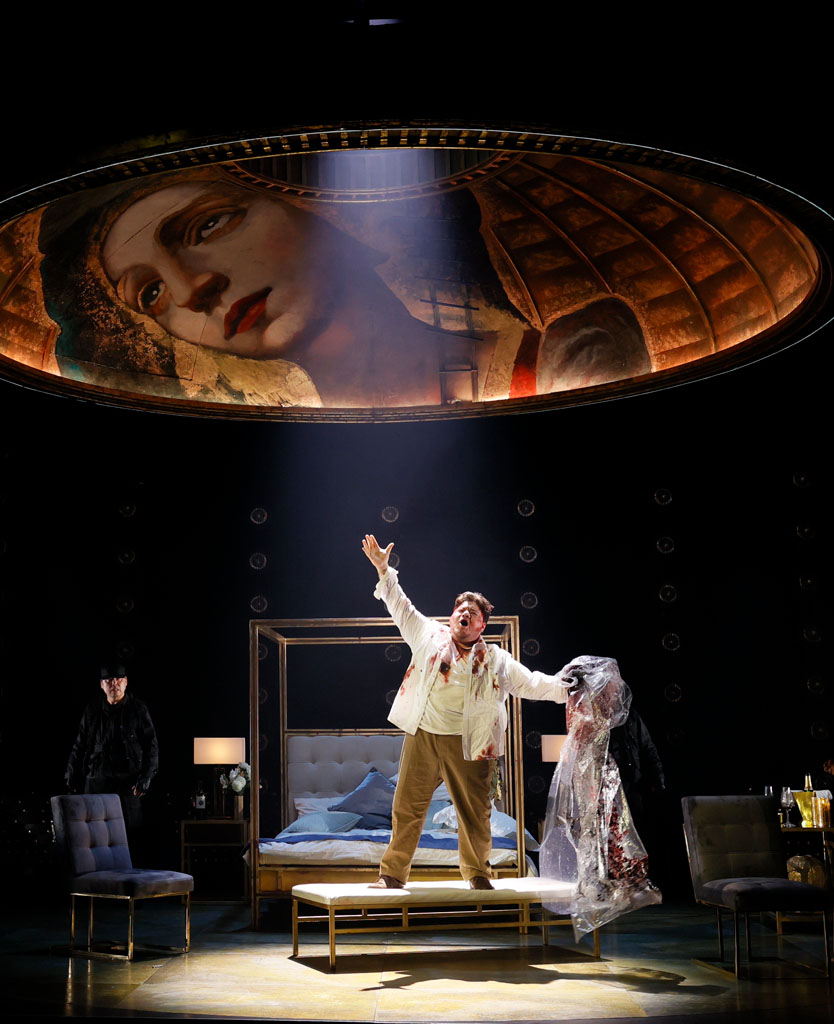
I spoke with Gavin Pawsey, Sound and Vision Manager for Opera Australia, just before they started their first piano run-through in the arena. So, whose idea was it to take on the not unchallenging task of staging an opera in a sports stadium? “You know, I’ve been asking around, and I haven’t found out yet!,” laughs Gavin. “The arena idea has been in development for a few years. Just last night, we did a Q&A-style ‘Insights Night’ for our patrons, and Jo Davies was saying she had seen this Opera North production a couple of times over in the UK, and she knew that it would sit beautifully in Margaret Court Arena. It’s quite a stunning set, and with all of our black draping building a proscenium theatre, it sits there like a jewel in a black box. It’s so impressive and it’s looking fantastic.”
With the show designed from the ground- up to tour, getting the production into Margaret Court Arena has been relatively straightforward, even though it lacks the installed infrastructure that Opera Australia’s crew are used to. “In reality, it’s quite a simple set,” explains Gavin. “It’s got a raked stage and risers. It’s quite rock and roll; there’s 130 PAR Cans – real, old school ones on dimmers, not LEDs. The major feature of the set, the duomo, is reminiscent of the Pantheon in Rome. The underside is painted, but you can see the structural work that holds it together; it’s a bare-bones look. We’ve built quite a wide proscenium here in the arena, but it’s not going to be as wide when we take the production into the Joan Sutherland Theatre at the Sydney Opera House.”
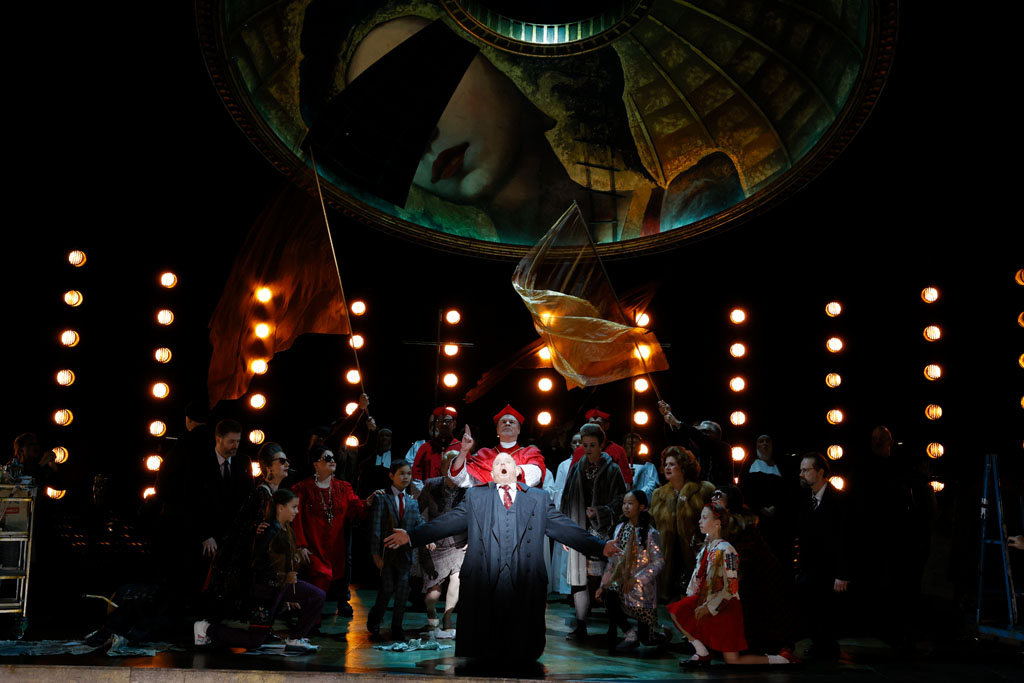
With Arts Centre Melbourne’s State Theatre dark, OA have managed to borrow some of what they need for Tosca. “We’ve got a lot of the black flats from the State Theatre,” continues Gavin. “While they refurbish, a lot of their gear is actually stored out at our store, which has been convenient. The flats form our side-stage masking, which reduces the necessity for rigging. During the scene changes, the flats are folded and moved off to the side so we can move all of the necessary props and set pieces onto the stage, which is no mean feat.”
Theatre Safe Australia have provided extensive rigging staff and equipment to get everything safely flown. In total, 70 chain motors are in the air, including nine EXE Vario variable speed motors to fly the duomo on OA’s Raynok control system. Four more EXE Varios run the equivalent of a house curtain. “During the show, the duomo goes from hanging as a dome, to a 45-degree angle, and then finishes vertically,” illustrates Gavin. “To do those changes, we have to drop the duomo in. We use big dollies and large box truss. The truss gets dropped in onto the dollies, the duomo gets dropped onto the truss, then reconfigured and then flown back out again.”
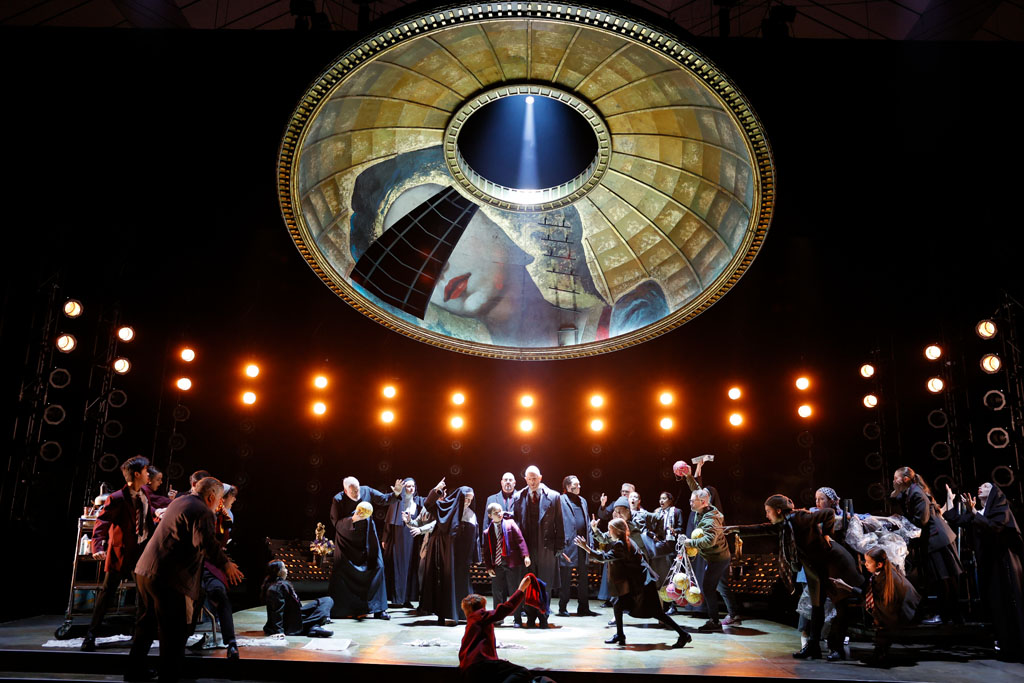
One notable difference between an arena and an opera theatre is the lack of orchestra pit. Faced with this logistical challenge, OA have elected to place the orchestra upstage, behind a gauze. “While we usually have a camera on the conductor, it’s even more important in this production, for obvious reasons,” states Gavin. “We’ve also had to install front of house full light and low light cameras for our stage manager and our operators, so everyone can see what’s going on. We’re sending those to the conductor as well. When we get to the Joan Sutherland Theatre, sightlines are still not always great, so there are monitors around the circle front. At the arena, I’ve been trying to recreate what the performers would be used to in the theatre with strategically placed conductor monitors, so they are comfortable and able to give their best performance.”
Sound designer Jim Atkins has the unenviable task of amplifying (sorry, reinforcing) Tosca, which tends to upset opera purists, but then again, Tosca wasn’t written to be performed in an arena. “Jim’s worked in Margaret Court with the Australian Ballet,” relays Gavin. “His sound design for Tosca is really about supporting what is happening on stage, as opposed to amplifying it. He’s trying to build an acoustic environment that supports the singers. They will have the orchestra behind them, and there are foldback speakers around and on the stage to assist. A lot of what is sent to the foldback will be the singer’s reverb (courtesy a beautiful Bricasti M7 – ed), so they will feel like they’re in a theatre space. The principles are wearing radio mics, but Jim’s sneaky sound design has a lot of microphones stashed around different parts of the set to capture the chorus.”
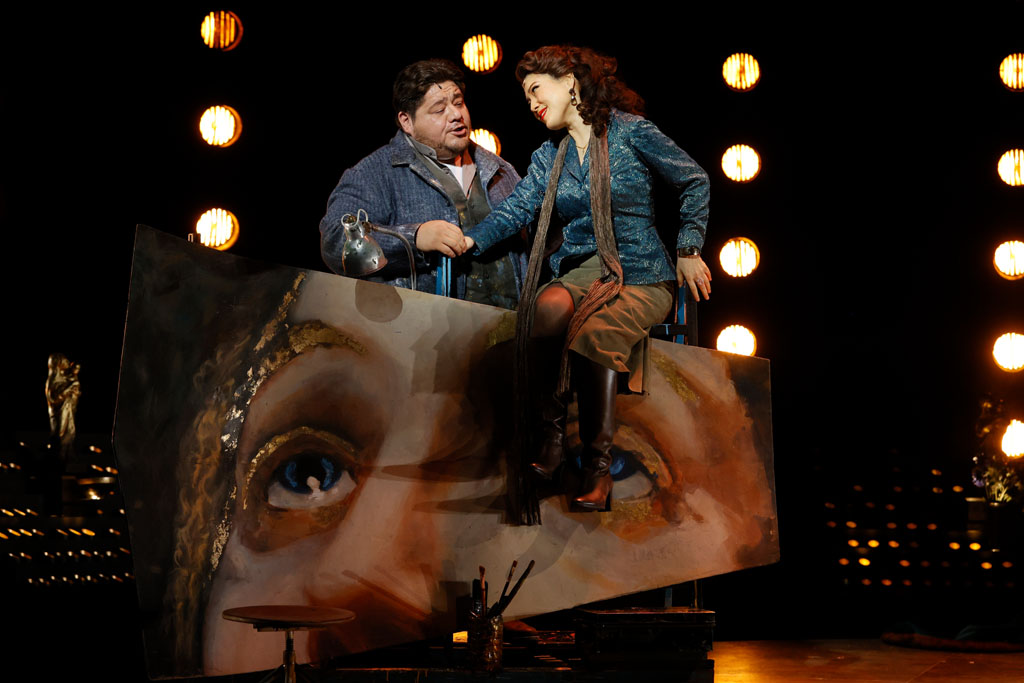
Jim has chosen to go with an L-Acoustics K2 line array system hung in left-centre-right mode, supplied by NW Group; 10 elements left and right, eight elements centre. The system is augmented by L-Acoustics KS28 subwoofers and 16 L-Acoustics 5XTs as front fill. Mixed on a DiGiCo Quantum 7, Jim’s sending the orchestra to left-right and vocals to centre. Thankfully, Opera Australia have heavily draped the back walls of the arena to improve the acoustics.
Running for just six performances, the success of this arena experiment with audiences will influence what Opera Australia may do in the future. “Our creative team are surprised and impressed by how it’s all coming together here at Margaret Court,” Gavin concludes. “Once the dust settles after the run, it’ll be interesting to see how it’s been received. It’s all been a very positive experience so far, so we’ll see how our audience is going to appreciate an opera in this space.”
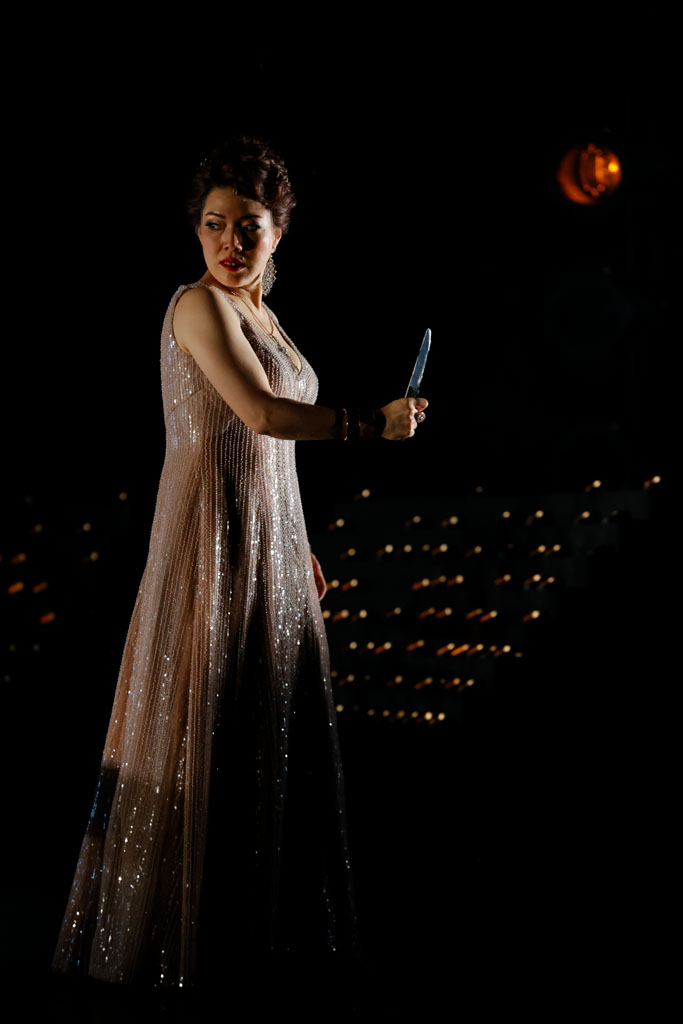
If you didn’t get a chance to see Tosca in an arena, the production runs in the more conventional surrounds of the Joan Sutherland Theatre, Sydney Opera House, from 25 June to 16 August: https://opera.org.au/productions/tosca-sydney/
The Gear
Lighting
- Provided by Chameleon
- 130 PAR cans
- Martin MAC Encores Ayrton Wild Suns
- PRG Ground Control follow spot system NanoPix foot lights
- LED tape Fibre optics
- 6 x Power Tiny Fogger Control: 2 x ETC Gio (OA)
Mechanical
- 70 chain motors supplied by Theatre Safe Australia, including EXE Vario variable speed motors
- Raynok control system 400 metres of truss
Audio
- Provided by NW Group
- 28 x L-Acoustics K2 line array elements 4 x L-Acoustics KS28 subwoofers
- 16 x L-Acoustics 5XT
- Onstage foldback: 4 x L-Acoustics 12XT
- Orchestra foldback: 20 x Yamaha MSP-3, 1 x Genelec 8030B
- FoH: DiGiCo Quantum 7 digital mixing console, 2 x Bricasti M7 stereo reverbs
- Orchestral Microphones: Schoeps CMC6s, AKG C414s, Neumann KM184s, Sennheiser MKH 416s, Crown PCC160s
- Radio Microphones: Sennheiser EM3732- II N receivers, Sennheiser SK5212-II transmitters, DPA 4061 lapel mics
Video
- Supplied by Big Picture/Creative Technology
- Panasonic AW-UE100KEJ 4K PTZ cameras Panasonic AW-RP60GJ 4K PTZ remote
- Video distro by Riedel Mediornet MicroN and Riedel Mediornet MicroN Multiviewer
Comms
- Provided by Riedel Artist Core Network
- Bolero wireless beltpacks
- Riedel DSP-2312 desktop smart panels
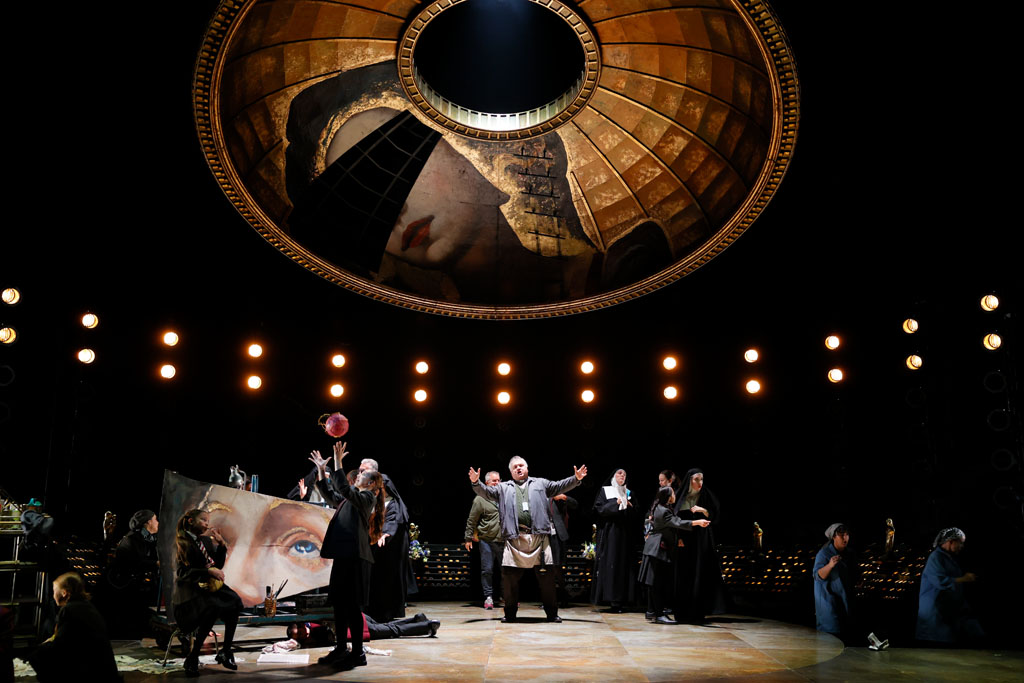
Subscribe
Published monthly since 1991, our famous AV industry magazine is free for download or pay for print. Subscribers also receive CX News, our free weekly email with the latest industry news and jobs.

